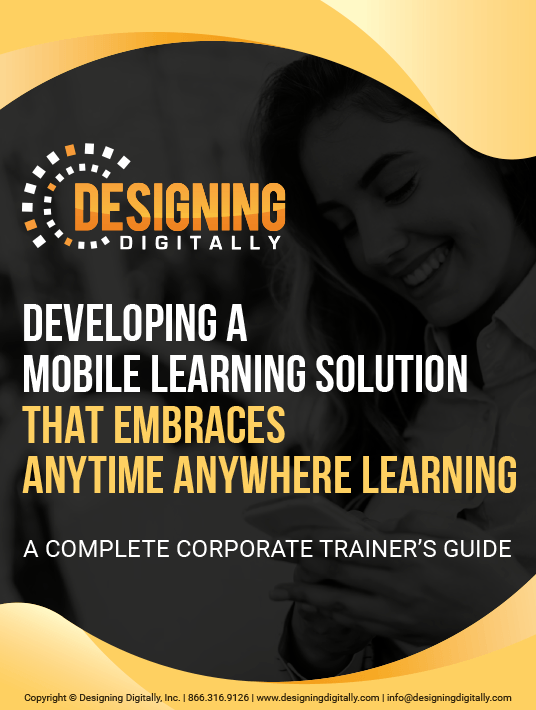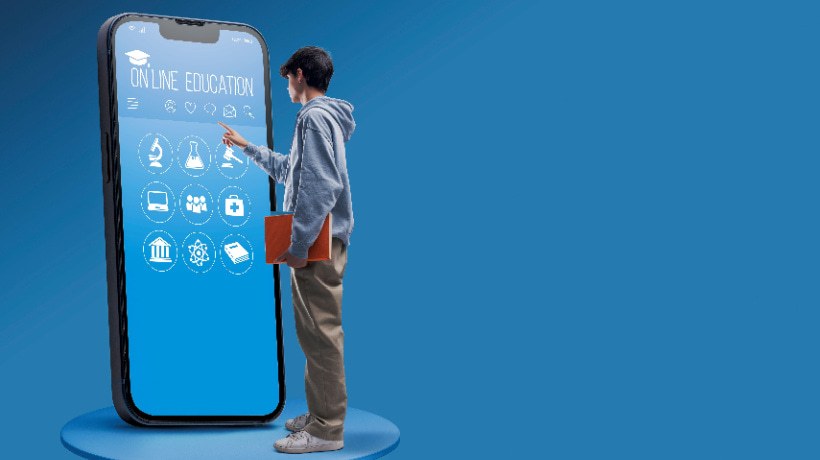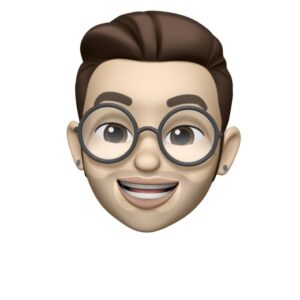Mobile Learning App: How To Maximize Its Value
Mobile learning and training apps have been gaining traction in the L&D space for several years now. We once considered mobile compatibility an extra feature to include in cutting-edge eLearning modules. Now, many training directors expect all modules and games to work on mobile devices. Some may say mobile compatibility has become a standard rather than an added bonus. With this change in mindset, it’s easy to lose sight of the needs of mobile learners. My firm, Designing Digitally, Inc., created a mobile training program for Bridgestone Americas Tire Operations, LLC. This case study presents the solution we developed, and most importantly, why we made certain design choices. Look for ways you can apply these lessons and principles to your own mobile learning app.

Initial Needs
Bridgestone came to us in search of a mobile solution. They wanted a tool their sales personnel could access while they are traveling to meet with current and potential clients in the field. Bridgestone realized their sales personnel were only recommending the tires they felt comfortable talking about, even when those weren’t necessarily the best fit for the client’s needs. Therefore, the training team needed to equip their sales personnel with knowledge of all their product offerings.
As we conducted a Needs Analysis, 3 key pieces of information came to light:
1. The mobile training needs to be accessible to Bridgestone employees as well as external resellers.
2. Sales personnel often travel to rural or remote areas where cell service is sub-par.
3. The company updates their product line frequently.
Suggested Delivery
We quickly realized Bridgestone could not host a training package in their Learning Management System (LMS) since they wanted to make it available to external resellers. We suggested creating a stand-alone website that learners can access from a browser on their smartphone. They do not need to download anything or obtain login credentials. They simply navigate to the URL. This eliminates any barriers to entry for learners to begin using the tool. Both teams agreed the training solution doesn’t need to be anything elaborate. We decided to create flashcards of each product that display the applications where the tire excels. It does not require much bandwidth to load and use the flashcards. Because of this, learners can still use the website when they have a slower internet connection. Also, we can either edit or add product information on the website without disrupting the user experience. This setup accommodates the frequent changes Bridgestone makes to their product line. Learners see the updates we make as soon as they navigate to a new page in the site or refresh their current page. Lastly, learners can open the stand-alone website on a desktop or laptop computer, whereas a mobile app would only be available on a mobile device. This was important to Bridgestone because they believed some of their older learners would not be interested in using the tool on their smartphones. Plus, it gives the sales personnel flexibility to view the website at their desks if they choose. They can even plug their laptop into a projector or large display in a conference room if they want to use the website as a visual aid in a sales presentation.
Mobile-First Design
It was critical for us to design the learning experience around the needs of mobile learners. We created a responsive design so it works on desktop/laptop computers, but we considered computer users to be the secondary audience. One of our goals was to make it easy to navigate to the information on the website. The original site contained four main sections: Product Flashcards, Knowledge Check, Selling Scenarios, and Downloadable Flashcards. The website automatically opens to the first section, Product Flashcards, since that’s what the majority of learners are using the site to view. Mobile learners use a hamburger-style menu in the top left corner to navigate to a different section if they so choose. Learners on a computer see tabs along the left side of the page rather than the hamburger menu since there is more screen real-estate. Another goal, which we apply to all mobile projects, is for learners to easily click buttons. Therefore, we created large buttons for the product categories. The oversized buttons are easy for mobile learners to tap, yet are styled nicely with a photograph to not look obtrusive on a computer. We also enabled the swipe gesture for learners to swipe through the list of flashcards. This is, of course, not available on the computer, so those learners can click left and right arrows to slide through the list.
Extending The Project’s Impact
Bridgestone launched their mobile-friendly website, Learning on the Go, in 2015. We embedded Google Analytics in the site so they could monitor user statics. Learners met the new tool with excitement! After a few years, Bridgestone noticed the novelty had worn off. Their analytics showed traffic and new users were decreasing. Rather than retiring the project, they decided to rejuvenate the site by adding a fifth section called Commercial Product Challenge. The new section allows learners to earn prizes, such as Bridgestone jackets and travel mugs, by earning the top score on quiz questions. We worked with them to design the challenge to adhere to the simple, quick-loading design, yet added some animations and a progress bar to add flair to the quiz. Adding the challenge, with the incentive of prizes, helped rekindle the excitement surrounding the tool. We continue to work with Bridgestone each quarter to update content on the product flashcards. We created a spreadsheet to make the process quick and easy for their content team as well as our developers. These routine revisions ensure the website stays current and relevant.
Project Success
Learners enjoy the ease of use and the straightforward nature of the website. Bridgestone employees were accustomed to flashy eLearning modules and gamified exercises that took a long time to complete. While those have their benefits, the learners appreciate how the website is set up more like a resource library than a long training session. In the past year, the average user session was six minutes long. This statistic proves learners are jumping on the site to grab a few pieces of information, then moving on to their sales meeting or whatever other tasks they need to complete. Crystal Warren, an Instructional Designer at Designing Digitally, Inc. said, “Learning on the Go has proven to be an exceptional training tool for Bridgestone Representatives. The flashcards provide an easily-accessible and engaging way to become experts on the tires they carry, with the ability for them to access the training virtually anywhere and at any time. The quizzes help Bridgestone identify any representatives who may be struggling.” Learning on the Go has acquired over 8,000 unique users since the website launched in 2015. It has also earned two prestigious awards: a Silver Horizon Interactive Award and a Silver Indigo Award.
Lessons In Mobile Development
You may not have a project just like Learning on the Go. However, there are several items you can take away from this case study that will help you maximize the value of your mobile learning app or responsive mobile training. First, investigate all the needs of the audience. Consider everything you discover in order to determine the best format for your mobile project. Next, be sure all of your designs are focused on the User’s Experience while using a mobile device. Don’t let mobile compatibility be an afterthought. And lastly, find ways to extend the lifespan of your mobile project. Keep it updated, assess what learners appreciate, and add new features or sections if necessary. Mobile training offers a world of possibilities for your learners. Leverage it to equip your employees with the tools they need to succeed! Download the eBook, Developing A Mobile Learning Solution That Embraces Anytime Anywhere Learning, to learn how to maximize the value of your mobile learning app.









